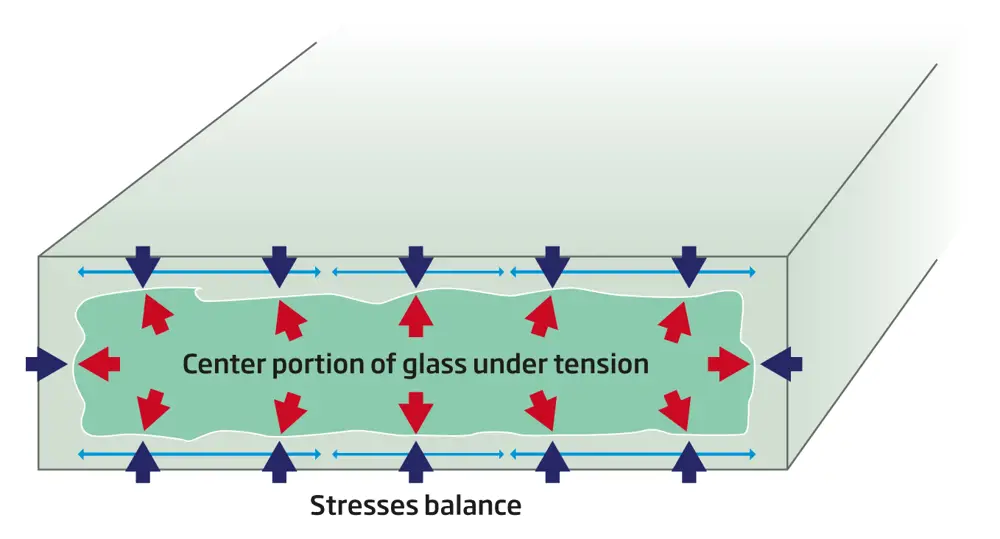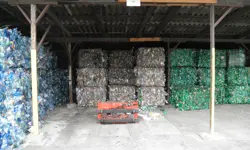
Toughened glass
Commercial glass is generally made up of three main components: sand (also referred to as silicon dioxide), limestone and sodium carbonate. Toughened glass is a type of safety glass that is physically stronger having been reinforced by either thermal or chemical treatments. It is used in a range of applications, from car windows and buildings to mobile phones, tablet devices and TVs.

Tempering the glass to compress the outer surface and expand the inner layers balances the tension in the glass to make it tougher. This also causes the glass to crumble into small granular chunks instead of jagged shards when broken, making it less likely to cause injury, and means that the surface is more resistant to cracks and scratches.
With thermal tempering, the glass passes through a furnace that heats it above its transition temperature of 564°C to around 620°C. The glass surface is then cooled quickly with forced air while the inner portion is able to flow freely and contract.
Glass that has been chemically strengthened is tougher than glass that has been tempered thermally
Chemical toughening produces a layer of compressive stress on the surface of the glass by exchanging the sodium ions in the surface with larger potassium ions that take up more room and are pressed together when the glass cools. This is done by immersing the glass in a bath of molten potassium nitrate. Glass that has been chemically strengthened is tougher than glass that has been tempered thermally.
***
This article has been adapted from "How does that work? Toughened Glass", which originally appeared in the print edition of Ingenia 68 (September 2016).
Keep up-to-date with Ingenia for free
SubscribeRelated content
Materials

What are aerogels?
Among some of the lightest known solid materials, aerogels, formed by removing liquid from gels, have many uses ranging from catalysts and sensors, to being used on NASA missions.

Recycling household waste
The percentage of waste recycled in the UK has risen rapidly over the past 20 years, thanks to breakthroughs in the way waste is processed. Find out about what happens to household waste and recent technological developments in the UK.

Diamond technology: beyond hardness
Diamond is being used in an increasing variety of industrial and technological applications, due to other properties in addition to its hardness. The UK is home to a wide range of diamond research, development and synthetic diamond production activities.

A lot more than lubrication
The control of friction and wear in mechanical systems by lubrication and surface engineering has led to safer, faster transport as well as medical innovations. Ian Hutchings FREng, GKN Professor of Manufacturing Engineering at the University of Cambridge, highlights the progress and some failures of the important discipline of tribology.
Other content from Ingenia
Quick read

- Environment & sustainability
- Opinion
A young engineer’s perspective on the good, the bad and the ugly of COP27

- Environment & sustainability
- Issue 95
How do we pay for net zero technologies?
Quick read

- Transport
- Mechanical
- How I got here
Electrifying trains and STEMAZING outreach

- Civil & structural
- Environment & sustainability
- Issue 95